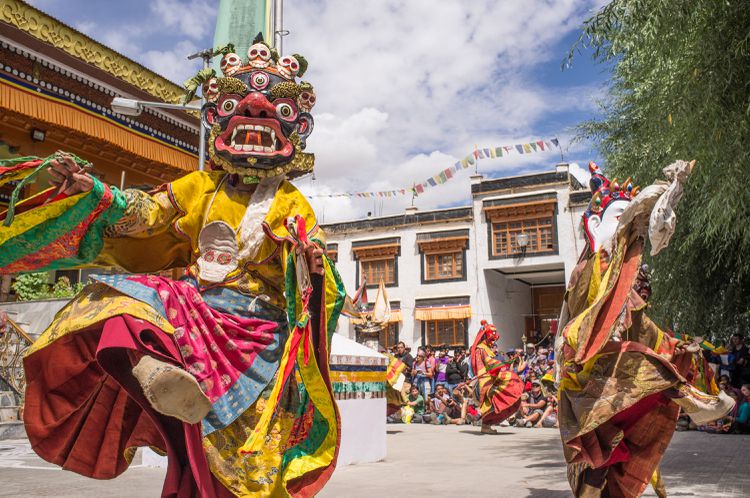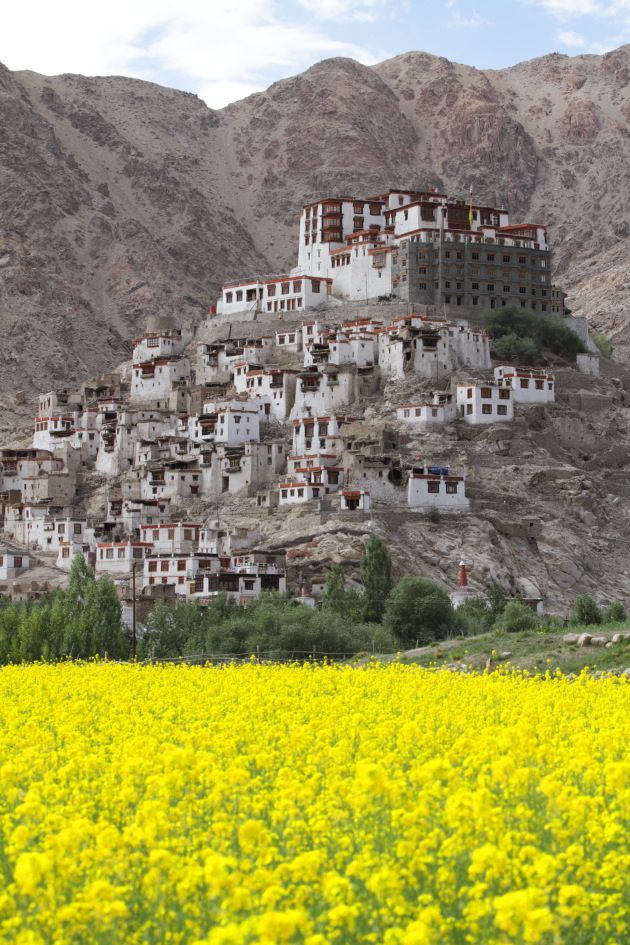Ladakh: Timeless Beauty and Modern Contrasts | A Journey Through Solitude and Change
Ladakh, often referred to as the “Land of High Passes,” is an ancient region nestled in the Indian Himalayas. Its breathtaking landscapes, rich cultural history, and deep spiritual traditions make it a destination that captivates both the mind and the soul. However, beneath its timeless beauty lies a story of transformation—a story of how modernity is reshaping this serene land, presenting contrasts between the old and new, tradition and technology, solitude and connection.
In this blog post, we’ll explore Ladakh’s enduring charm and the modern forces that are rapidly changing the region. We will delve into the cultural, environmental, and spiritual aspects that define Ladakh, while also examining how tourism and modernization are creating both challenges and opportunities for this unique part of the world.
1. Introduction: Ladakh’s Eternal Appeal
Ladakh is a place of profound stillness, where the natural world reigns supreme. The vast, open landscapes—marked by towering mountains, deep valleys, and pristine lakes—offer a refuge for those seeking isolation and reflection. For centuries, the region has drawn adventurers, spiritual seekers, and those who yearn to disconnect from the chaos of modern life.
But in recent years, Ladakh has also become a hotspot for tourism and development, leading to a blend of traditional and modern influences. This mix creates a striking contrast between the ancient rhythms of life and the pace of modern change.
Key Features of Ladakh’s Beauty:
- Snow-capped mountains: The Himalayas and Karakoram ranges create a dramatic backdrop.
- Crystal-clear lakes: Pangong Tso and Tso Moriri are among the most famous lakes, known for their vibrant blue waters.
- Ancient monasteries: Hemis, Thiksey, and Diskit Monasteries reflect Ladakh’s deep Buddhist heritage.
- Diverse culture: Influences from Tibet, Kashmir, and Central Asia make Ladakh’s culture a unique blend of history and tradition.
2. The Timeless Landscapes of Ladakh
One cannot begin to describe Ladakh without first speaking of its landscapes. The towering peaks, barren valleys, and shimmering lakes give Ladakh an otherworldly beauty that feels timeless. The region’s remoteness contributes to its charm, as the stark silence invites contemplation and self-reflection.
The High Passes: Natural Barriers and Gateways
Ladakh’s name itself derives from its geographic nature. The region is dotted with high passes, including the famous Khardung La, one of the highest motorable roads in the world. These passes, while once formidable barriers that isolated Ladakh from the outside world, have now become gateways that attract adventurers seeking high-altitude thrills.
Pangong Tso and Tso Moriri: Lakes of Spiritual and Ecological Importance
The stillness of the Pangong Lake at sunrise, with its ever-changing hues of blue, has left visitors in awe for centuries. The lake’s natural beauty is complemented by its spiritual significance, as many Buddhists believe it is a place where the earth and heavens meet. Similarly, Tso Moriri, a protected wetland reserve, is home to migratory birds, adding to its ecological importance.

3. Ladakh’s Rich Cultural Tapestry
Ladakh’s culture is a reflection of its history as a crossroads of various civilizations. Influenced by Tibetan Buddhism, Kashmiri Islam, and ancient Central Asian cultures, Ladakh has developed a unique cultural identity.
Monastic Life and Spiritual Heritage
The monastic traditions in Ladakh are one of its most defining features. The region is home to numerous Gompas (Buddhist monasteries), many of which are perched on high cliffs or nestled in remote valleys. These monasteries serve not only as religious centers but also as repositories of Ladakh’s art, philosophy, and history.
Hemis Monastery, the largest and wealthiest in Ladakh, hosts the annual Hemis Festival, celebrating the birth of Guru Padmasambhava, a significant figure in Tibetan Buddhism. The festival draws visitors from all over the world, showcasing Ladakh’s rich spiritual and cultural life.
Archery: From Tradition to Modernity
Archery has long been a cultural staple in Ladakh. Traditionally, it was not only a sport but also a form of social gathering, with competitions held at village festivals. Today, archery in Ladakh is undergoing modernization. While efforts are made to preserve the traditional form of the sport, modern archery is becoming increasingly popular among the younger generation.

4. Modern Contrasts: Tourism and Development in Ladakh
While Ladakh’s natural beauty and cultural heritage remain its greatest draws, the region is not immune to the forces of modernization. The growing tourism industry has brought both economic benefits and environmental challenges.
The Impact of Tourism on Ladakh’s Ecosystem
- Economic growth: Tourism has provided much-needed income for local communities. Ladakhis now cater to a global audience with homestays, eco-tours, and adventure activities such as trekking and river rafting.
- Environmental stress: The influx of tourists has put significant pressure on Ladakh’s fragile ecosystem. Increased waste, water scarcity, and damage to natural habitats are becoming pressing issues.
Urbanization and Cultural Shift
Leh, the capital of Ladakh, has transformed from a sleepy mountain town into a bustling hub for tourists. Hotels, restaurants, and cafes now line the streets that were once dominated by traditional markets and local vendors. The rising influence of Western culture is evident in everything from cuisine to lifestyle choices, but this shift raises concerns about the loss of Ladakh’s authentic cultural identity.
Climate Change and Its Effects
Ladakh’s climate is changing rapidly, with warmer temperatures affecting the region’s traditional agricultural practices. Glaciers, the primary source of water for many Ladakhi villages, are receding at an alarming rate. This has led to water shortages, threatening both livelihoods and the sustainability of Ladakh’s natural environment.

5. Finding Balance: Sustainability and Tradition in Ladakh
As Ladakh faces the challenges of modernization, efforts are being made to strike a balance between development and sustainability. Local communities, NGOs, and government bodies are working together to address environmental issues while preserving Ladakh’s unique cultural heritage.
Eco-Tourism Initiatives
One of the most promising developments in Ladakh is the rise of eco-tourism. Local tour operators are increasingly offering eco-friendly treks, encouraging tourists to minimize their environmental footprint. These tours often include homestays in traditional Ladakhi houses, providing a more authentic experience for visitors while supporting local communities.
Reviving Traditional Agriculture
Efforts are also underway to revive traditional crops such as barley and buckwheat, which are more resilient to Ladakh’s changing climate. By promoting sustainable farming practices, Ladakhis hope to maintain their agricultural heritage while reducing dependence on imported food.
Preserving Monasteries and Cultural Sites
Organizations like the Himalayan Cultural Heritage Foundation are working to preserve Ladakh’s ancient monasteries and cultural landmarks. These efforts are not only about safeguarding buildings but also ensuring that the spiritual practices and traditions that define Ladakh’s identity continue to thrive in the modern era.

6. Conclusion: A Land of Contrasts and Continuity
Ladakh is a land where the past and present meet, where timeless beauty coexists with the pressures of modernization. Its vast landscapes, spiritual heritage, and vibrant culture continue to inspire awe in all who visit. Yet, as the region grapples with environmental challenges and cultural shifts, the need for a delicate balance between tradition and change becomes ever more critical.
For travelers, Ladakh offers more than just a visual feast; it provides a journey into solitude and self-reflection, an opportunity to witness a place where contrasts exist harmoniously. As Ladakh moves into the future, it remains both a sanctuary of ancient wisdom and a beacon of modern resilience.
Q&A Section
Q1: What is the best time to visit Ladakh?
The ideal time to visit Ladakh is during the summer months, from June to September. During this period, the weather is pleasant, and most of the mountain passes are accessible, making it easier for travelers to explore Ladakh’s famous lakes, monasteries, and valleys. Winter months, although extremely cold, attract adventure enthusiasts interested in trekking the frozen Zanskar River.
Q2: How has tourism impacted Ladakh’s environment?
Tourism has contributed significantly to Ladakh’s economy, but it has also placed strain on the region’s fragile ecosystem. An increase in tourist numbers has led to waste management issues, water shortages, and habitat disruption, especially around popular destinations like Pangong Lake and Nubra Valley. Efforts are being made to promote eco-tourism and sustainable practices to mitigate these effects.
Q3: What cultural activities can visitors engage in while in Ladakh?
Visitors to Ladakh can immerse themselves in the local culture by attending traditional festivals such as the Hemis Festival, exploring ancient monasteries like Thiksey and Diskit, or participating in village homestays that offer a glimpse into the everyday life of Ladakhi families. Archery tournaments and folk music performances are also significant cultural highlights.
Q4: What are some sustainable tourism initiatives in Ladakh?
Sustainable tourism in Ladakh includes eco-friendly trekking routes, waste management programs in popular tourist areas, and the promotion of homestays that support local communities. Organizations and local tour operators are increasingly focused on minimizing the environmental impact of tourism while preserving Ladakh’s natural and cultural heritage.
Q5: How is climate change affecting Ladakh?
Ladakh is facing the effects of climate change, with rising temperatures causing glaciers to retreat and water sources to dwindle. This has led to significant challenges for agriculture, as many Ladakhi farmers rely on glacial meltwater for irrigation. Local efforts to combat climate change include promoting the cultivation of traditional crops like barley and buckwheat, which are more resilient to changing conditions.
Q6: How can travelers support Ladakh’s local economy?
Travelers can support Ladakh’s local economy by staying in locally owned guesthouses or homestays, purchasing handicrafts from local artisans, and opting for eco-friendly tours that are operated by local guides. Participating in community-based tourism initiatives helps ensure that the benefits of tourism are distributed within the local community.

Conclusion: Embrace Ladakh’s Contrasts
Ladakh is a land where tradition meets modernity, where solitude coexists with the vibrancy of cultural festivals, and where the natural world remains as awe-inspiring as ever despite the forces of change. As visitors, it is essential to appreciate Ladakh not just for its beauty but also for the challenges it faces. By embracing sustainable practices and respecting the local culture, travelers can help preserve Ladakh’s timeless charm for future generations.
Explore Ladakh not just as a destination, but as a journey into the past, present, and future—a place where contrasts enrich the experience, and every turn offers a new perspective.
Sources:
- Vikalp Sangam on traditional life in Ladakh: Read more (Vikalp Sangam)
- Inverse Journal on Ladakhi archery and its cultural evolution: Read more (INVERSE JOURNAL)
- Leisure and Me on Ladakh’s landscapes and spirituality: Read more (Leisure and Me)








